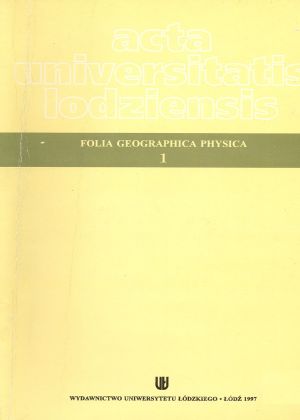Stan wiedzy na temat rozwoju dolin ekstraglacjalnych na niżu polskim w okresie przejściowym plejstocen-holocen
The state of knowledge of valley evolution in non-glaciated regions of the polish plain during the transition period from Pleistocene to Holocene
Author(s): Krystyna TurkowskaSubject(s): Environmental Geography
Published by: Wydawnictwo Uniwersytetu Łódzkiego
Keywords: valley; Polish Plain;
Summary/Abstract: During the transition period between Pleistocene and Holocene, drom 20 000 to 8000 BC, river valleys were subject to the impact of vistulian ice-sheet or to the influence of periglacialclimate. Their development was dependent on their width and position in relation to the edge of the ice-sheet.In the southern part of the Polish Plain three areas where advanced river valley research is carried out can be distinguished (Fig. l). The frrst of these is the middle Vistula valley which was formed by water inflow from the upper montainous part of the basin and by the direct influence of the Scandinavian ice-sheet. The second area where research is the most advanced methodologically encloses the Prosna river valley and the middle Warta river valley.The Prosna valley was situated in a periglacial zone and the Proma base level changed according to the vistulian ice-sheet location. The middle Warta river valley was embraced by the Leszno stage zone and thus is of pradolina origin. The Łódź Upland situated on a watershed is the third area of valley studies. Here the research is concerned with the upper parts of small valleys, where climatic and glacial factors did not mingle with each other. Also investigations of denudational valley infI1l are valuable for the valley studies.During the transitional period three stages of river valley development (Fig. 2) can be recognized:1. 20000-14 500 B.C. - the braided river phase with glacial, periglacial and mixed supplies. Aggradation of valley floors was characteristic of the phase and cut and built terace formation occured rarely.2. 14 500-10 000 B.C. - the complex phase of valley floor cutting with simultaneous change from braided to widely meandering channel patterns. Present results show that thealternation did not occur at the same time in diITerent valleys or even fragments of valleys and was strongly dependent on local conditions.3. 10000-8000 B.C. - the meandering river phase with decreasing meander proportions untill mezo-Holocene.In general the state of knowledge od valley development in non-glaciated regions of the Polish Plain in the transition period is regarded as advanced. That is, to a considerable extent, the result of various conditions in the areas where the studies are conducted. It is recommended that the research methods should be perfected and standardized. This would enable the distinction and comparision of local and general determinants of valley evolution to be made more precisely. Expansion of model application from the Warta river study area to others would speed the transition from quality to quantity characteristics of the process.
Journal: Acta Universitatis Lodziensis. Folia Geographica Physica
- Issue Year: 1/1997
- Issue No: 1
- Page Range: 67-87
- Page Count: 21
- Language: Polish

